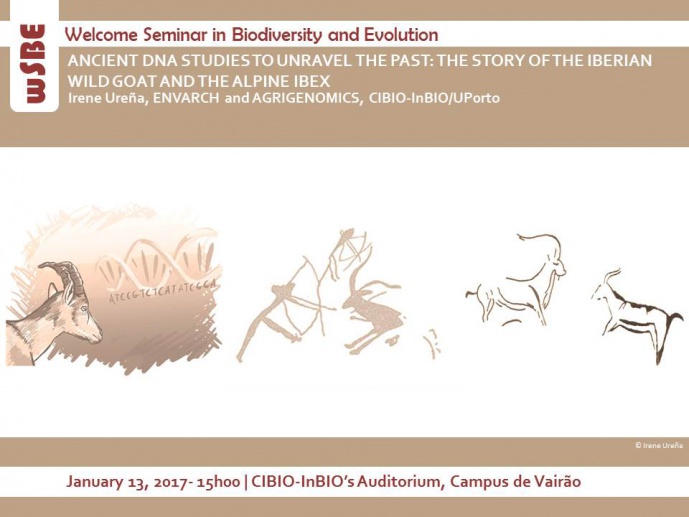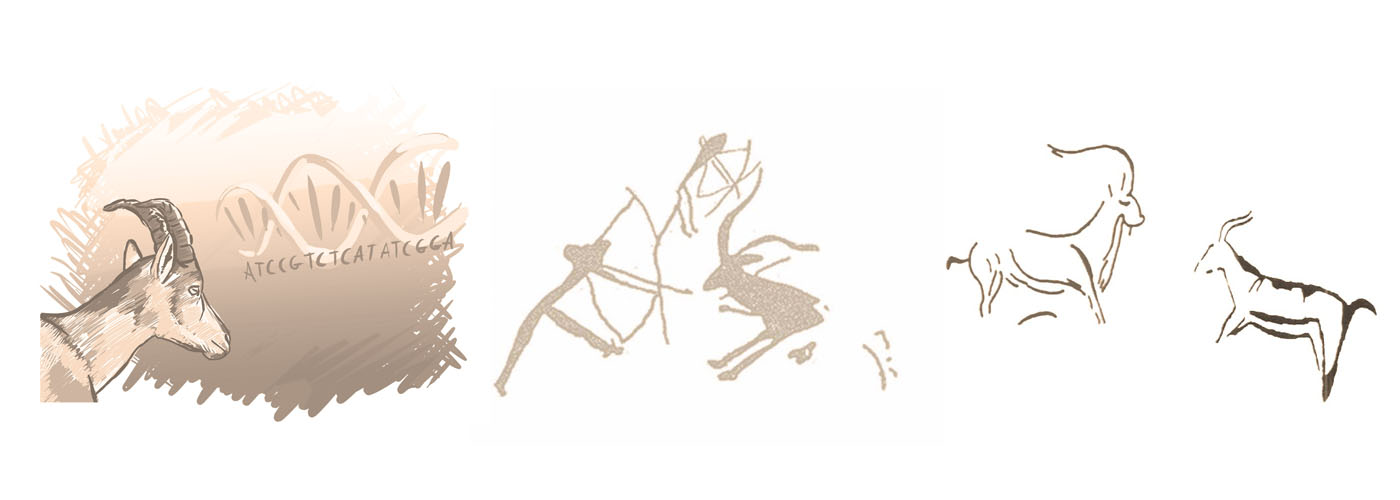ANCIENT DNA STUDIES TO UNRAVEL THE PAST: THE STORY OF THE IBERIAN WILD GOAT AND THE ALPINE IBEX

WELCOME SEMINAR IN BIODIVERSITY AND EVOLUTION

I recently joined CIBIO-InBIO and I would like to introduce myself and talk about my experience working with ancient DNA on faunal and human remains. I will focus on the main study of my PhD: The analyses of ancient wild goat populations in Spain and France.
The subspecies of the genus Capra that inhabit in Western Europe are the Alpine ibex (Capra ibex) and the Iberian wild goat (Capra pyrenaica). Although both species are not considered threatened at present, there is concern regarding their genetic diversity after centuries of population decline. The taxonomic position of the different species and subspecies for the genus Capra in general, and for the C. ibex and C. pyrenaica in particular, remains under debate. The evolutionary history of these two species is also controversial. There are two main alternative hypotheses to try to explain the origin of these species in Western Europe: one derives from morphological studies on modern and fossil bone material and the other from genetic data obtained in modern populations.
It is argued that molecular studies based on modern goat populations might not reflect the complete genetic history of the species. While these are focused only in the present time period, it is important to have a temporal perspective when studying species that are known to have suffered drastic bottlenecks in the recent past. On the other hand, there is no agreement between morphometric and genetic analysis. Ancient DNA research can overcome the lack of a temporal depth in genetic studies of modern populations. So in order to investigate the paleo-genetic history of the Alpine ibex and the Iberian wild goat, mitochondrial information from different fossil samples collected in Spain and France were analysed. Our results support the monophyletic origin of both species and the hypothesis of one-wave migration of wild goats into Western Europe followed by possible allopatric speciation.
Irene Ureña joined CIBIO-InBIO in past October as post-doc in the ARCHAIC Project, to investigate the origins and modes of improvement of cattle in the Iberian peninsula. She studied Biology at Universidad Complutense de Madrid, obtained a master degree in Paleontology (DEA degree) at Universidad Autónoma de Madrid, and she did her PhD in ancient DNA at Centro Mixto UCM-ISCIII in Madrid. Irene is a member of the archaeological sites of Atapuerca (Burgos) and Pinilla del Valle (Madrid) with great experience in fieldwork. Just before joining CIBIO-InBIO, Irene was a research assistant at the renowned ancient DNA lab of Jakobsson at the Evolutionary Biology Centre (Uppsala University, Sweden). Her scientific interests include ancient DNA methodologies, animal conservation, domestication and human evolution.
[Group Leader: Simon Jonathan Morton Davis, Environmental Archaeology and Albano Beja-Pereira, Livestock Genomics and Conservation]
Image credits: Irene Ureña